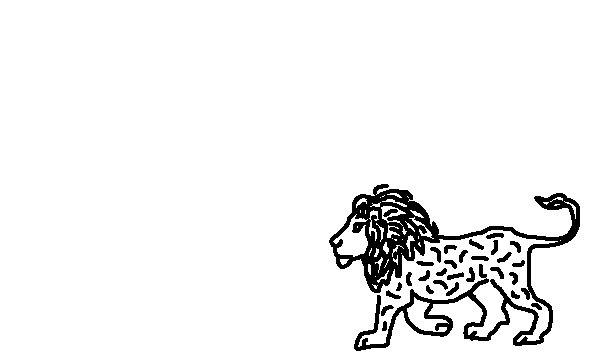My first experience studying African large carnivores was as a research assistant for the Botswana Predator Conservation Trust (BPCT) throughout 2012. It was during this period that I discovered both my desire to conduct focused research on spotted hyaenas, and the need for someone to consolidate information on the BPCT study population. Spotted hyaenas are highly intelligent, gregarious carnivores that occupy an essential role in maintaining this ecosystem. There are so many interesting aspects of their behaviour, which meant it was difficult to choose what to focus on for my postgraduate research. Large carnivore research is a very time-consuming endeavour, and there is increased time pressure due to the four-year limit of the UK postgraduate system. After some adaptation to the challenges and realities of fieldwork in this ecosystem, my study came to focus on using ‘olfactory eavesdropping’ as a lens to further understand how hyaenas coexist with their heterospecific competitors. All five members of the predator guild deposit scent marks throughout their environment, which can function in territorial defence, sexual advertisement, and maintaining social cohesion. Additionally, sympatric species may ‘eavesdrop’ on these scent marks to gain information about their competitors, and receivers could potentially use this information to initiate or avoid encounters with other species. The majority of my work involves conducting olfactory experiments at sites of interest (e.g. hyaena communal latrines, large carcasses) and deploying motion-triggered camera traps to remotely monitor any responses.
In order to accurately score the responses of individual hyaenas to olfactory stimuli, it is necessary to know who is who. Individual spotted hyaenas can be identified by the unique spot patterns on their fur, much like a human’s distinctive fingerprint (see image 1). Not only do I need to identify individuals for my research, but it is also essential for the population monitoring and long-term research efforts conducted by the BPCT. Spotted hyaenas live in groups called ‘clans’, and average clan size varies greatly depending on the ecosystem in which they are living (Holekamp & Dloniak 2011). Furthermore, hyaenas live in a ‘fission-fusion society’, which means that they travel in smaller subgroups that form and disband several times throughout the day. As a result of this complex social system, determining clan membership and their territories can be time-consuming. Thus, I began the intriguing and enduring task of sifting through hundreds of hyaena photos and recorded sightings, each piece of information bringing me one small step closer to solving the puzzle.
This task was made easier by the efforts of a previous postgraduate student, Gabriele Cozzi, whose GPS collars deployed within this hyaena population often brought him to large carcasses and communal den sites. Gabriele started to compile ID photos of both collared and un-collared individuals, matching hyaenas to a given clan based on associations between individuals. At the beginning of my first field season, I created a Microsoft Access database to organize and visualize information about each individual hyaena within the population (see image 2). This database started out with 183 identified hyaenas, and has now grown to 460 individuals after 18 months of fieldwork. The number of photographed hyaenas in the population was greatly enhanced by the large-scale camera trap surveys conducted by another BPCT graduate student, Lindsey Rich.
Once you get your eye trained to pick out memorable spot patterns, identifying individual hyaenas is not too difficult. The more complicated activity is working out the clan associations for all of these individuals. During my first few months of fieldwork, I naively classified any hyaenas seen together, no matter the circumstances, as members of the same clan. However, after a while, things weren’t adding up. I was observing individuals from one clan feeding on carcasses with individuals from what was thought to be another clan – did this mean they were one giant clan, or just tolerating intruders? Furthermore, I discovered that a hyaena that we darted and collared within the local clan’s territory actually lives approximately 25 kilometers north, in an entirely different territory. The ranging patterns and social behaviour of these hyaenas turned out to be more complicated than I expected. I still have five months left of fieldwork, but I am able to make some preliminary conclusions. Using repeated associations between individuals, with the exception of those from large carcass sites, I have determined that hyaena clans in this ecosystem are likely composed of approximately 30-40 individuals. Compared to the prey-rich savannah ecosystems of East Africa (clan sizes up to 90 individuals) and the resource-scarce desert ecosystems of Southern Africa (clan sizes average 6-8 individuals), the hyaenas of the Okavango Delta live in medium-sized clans. Data from observations and camera traps at large carcass sites have shown that hyaenas will travel great distances outside of their clan territories to feed on carcasses. Okavango hyaenas seem to tolerate each other as lone individuals at large carcasses, but larger subgroups from opposing clans will fight over these sites. Therefore, although my identification database currently holds 460 individuals, many of these individuals have only been seen a handful of times as they were passing through our main study area.
The knowledge we have gained thus far on spotted hyaenas in this region, particularly their ranging patterns and flexible territoriality, is an important first step to understanding conservation issues such as human-hyaena conflict over livestock. Future work by BPCT researchers aims to understand hyaena movements in relation to the veterinary fence and cattle posts in the livestock landscape south of our main wildlife study area.

Written by
Jessica Vitale


Dive straight into the feedback!Login below and you can start commenting using your own user instantly